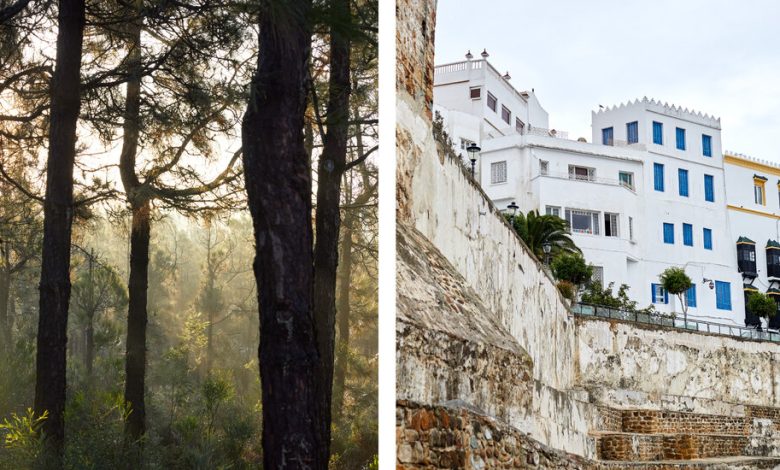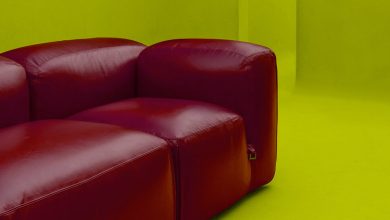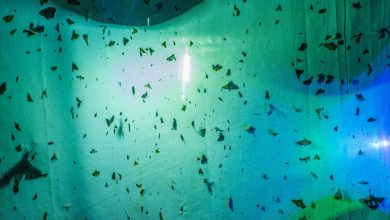What to See, Eat and Buy in Tangier, Morocco’s Cultural Magnet

T’s monthly travel series, Flocking To, highlights places you might already have on your wish list, sharing tips from frequent visitors and locals alike. Sign up here to find us in your inbox once a month, and to receive our weekly T List newsletter. Have a question? You can always reach us at [email protected].
Situated around 20 miles from Spain on the tip of North Africa, where the Atlantic Ocean meets the Mediterranean Sea, Tangier has been a coveted naval prize for centuries. Phoenicia, the Roman Empire, various Islamic caliphates, Portugal, Spain, England and France all laid claim to this hilly port town. After World War II, the city was an international zone — administered by several countries — until Morocco achieved independence in 1956 and regained full control of it. It was this colorful heritage and these scenic surroundings that helped to entice a steady stream of writers, artists and eccentrics in the mid-20th century, the city’s bohemian heyday.
Today, Tangier’s Tanger-Med port is the largest in Africa, serving as a nexus of international trade. The city has some 1.3 million inhabitants, and the streets hum with a blend of Arabic, French, Spanish and English, many locals flitting easily among them all. Not surprisingly, given this rich history, the architecture is an invigorating mix of styles, from the whitewashed townhouses of the Kasbah (a citadel dating back to the 1600s) to the faded Art Deco hotels and cinemas of the Ville Nouvelle (new town), erected in the first half of the 20th century. But the most compelling new developments in the city are being spearheaded not by expats but by locals. A five-minute walk from the Gran Café de Paris — made famous by the American writer and composer Paul Bowles and the American writer and artist William Burroughs, who frequented it in the 1940s and ’50s — leads to the Rue Khalid Ibn El Oualid (a.k.a. Calle Velázquez), a street in the heart of the old Spanish quarter, where young Tanjawis are slowly reviving the neighborhood. Here, you’ll find Le Kiosk, a bookstore and print shop run by Hicham Bouzid, a founder of the cultural organization Think Tanger, as well as contemporary galleries such as Zawia, opened by Najoua Elhitmi, who last year launched a cultural space called Factory that hosts occasional jazz concerts, speakers and exhibitions. Below, four insiders — including both expats who’ve made Tangier their home for decades and Moroccan-born entrepreneurs and designers — share their favorite spots.
The Insiders
A Tangier native, the fashion designer Kenza Bennani is the founder of New Tangier, a handbag and clothing brand that updates traditional Moroccan garments and accessories.
The garden designer Madison Cox is based in Marrakesh, Tangier and New York.
The photographer Seif Kousmate was born in Essaouira, Morocco, and in 2020 moved to Tangier, where he runs the restaurant Alma Kitchen + Coffee with his wife, the jewelry designer Lamiae Skalli.
The Italian novelist Umberto Pasti divides his time between Milan and Rohuna, a village on the Atlantic coast southwest of Tangier.
Sleep
“The ultimate rental is Sarah Wheeler’s House, Lalla Yenou. She’s an English art dealer specializing in turn-of-the-20th-century photography and her home, which sleeps 10, is a blend of what we call Jebli, a northern Moroccan mountain aesthetic that uses pastel lime-wash color schemes (whites, pinks, lilacs and all hues of blue), minimalist architectural structures and lots of striped textiles, with a big dose of comfy Britishness thrown in. I also love Mimi Calpe, a 19th-century townhouse turned boutique hotel on the edge of the medina with a lush garden. It’s one of the few places downtown with a swimming pool.” Lalla Yenou, J’maa Mokra, can be booked via Instagram at @lallayenou, from about $1,635 a week; Mimi Calpe, 71 Rue de la Plage; rooms from about $165 a night. — Kenza Bennani
“La Tangerina in the Kasbah has spectacular views across the Strait to Spain, but the owners also have apartments on the Grand Socco, the main square dividing the new town from the medina. You’re right in the heart of the city, a stone’s throw from everything, and have that feeling of properly living in a place.” 19 Riad Sultan, Kasbah; rooms from about $80 a night, apartments from about $110 a night. — Madison Cox
“Riad Mokhtar highlights local craftsmanship in all its details. The use of contemporary colors in some of the zellige, the bold patterns on the walls and the modern furniture make it feel very fresh.” 31 Rue de la Kasbah, Palacio Aharrar; rooms from about $150 a night. — Seif Kousmate
“I would stay at Aux 3 Portes, which is owned by a French interior decorator who transformed his house into a small hotel overlooking the Strait of Gibraltar and filled it with beautiful objects and furniture.” 19 Rue Sidi Bouknadel, Kasbah; rooms from about $135 a night. — Umberto Pasti
Eat and Drink
“My friends Seif and Lamiae own Alma Kitchen & Coffee, which serves proper, barista-made coffee and modern dishes like whole charred aubergine with labneh, harissa oil and pomegranate. Alma might have a reading or a talk going on, and I always run into somebody I know. It’s a bit of a hub for us locals. For drinks, the only place is Number One, which plays the best music in town — jazz, blues and old-school soul — and I can comfortably go on my own.” Alma Kitchen & Coffee, Place des Nations 44, Rue Antaki; Number One, 1 Avenue Mohammed V. — K.B.
“It’s hard to beat the rooftop at Villa Mabrouka, the British designer Jasper Conran’s new hotel, for a drink. His idea to add a spiral staircase from the entrance court leading directly up to the roof, where you get the whole view of the Strait, was inspired. Anna e Paulo is a sweet Italian place run by a brother and sister who were born in Tangier. It’s got a great neighborhood feel.” Villa Mabrouka, 1 Sidi Bouknadel; Anna e Paulo, 77, Avenue du Prince Héritier. — M.C.
“We go to El Dorado at least once a week. It’s authentic, with a friendly-family atmosphere. The grilled fish or shrimp with garlic is excellent. And we love to go to Casa d’Italia for pizza. The covered terrace with views onto the garden and the old-school waiters make it.” El Dorado, Rue Allal Ben Abdellah 23; Casa d’ Italia, Palais des Institutions Italiennes (Palais Moulay Hafid). — S.K.
“I prefer to eat in people’s houses, but I do like Darna, which is a women’s association that does Moroccan home cooking — including a Friday couscous with lots of seasonal vegetables — very well. Le Saveur de Poisson is my favorite for a freshly caught fish soup fragrant with Moroccan spices. Centuries ago, I used to love going to El Minzah for a martini in the piano bar.” Restaurant Communautaire Darna, Rue Jules Cot/Place du 9 Avril Ruelle des Blaghis; Restaurant Le Saveur De Poisson, 2 Escalier Waller; El Minzah Hotel, 85 Rue de la Liberté. — U.P.
Shop
“The Iranian ceramist Leyla Sadeghi does beautiful pomegranates that pay homage to her Persian heritage and magnificently quirky teapots and cups that incorporate 3-D renditions of cactuses, thorns and seashells into the design. You can visit her studio by appointment, and some of the pieces are available at the Kasbah Collective.” Leyla’s studio, 7 Avenue Sidi Boukhairi, next to Mosque Nour, book via WhatsApp, +346-656 46796; Kasbah Collective, 30 Rue Kacem Gennoun. — K.B.
“Tangier has two excellent bookstores: La Librairie des Colonnes and Les Insolites. Fifty years ago, the former was almost like a bank for authors like Jean Genet, as they would pick up their royalty checks there, and it mainly catered to expats. Now, you have a young Moroccan community that can read in French, Spanish, English and Arabic, so the stores have become an important resource for interesting literature.” La Librairie des Colonnes, Address 54 Boulevard Pasteur; Les Insolites, 28 Khalid Ibn El Oualid. — M.C.
“We love to go treasure hunting at Casabarata, a huge vintage market that sells everything from furniture and lighting to electronics. You always come back with something you definitely don’t need. The other day, we got an old Tangier telephone booth. And Kenza Bennani at New Tangier makes high-quality clothing that incorporatesexquisite handcrafted elements. ” Souk Casbarata, Avenue Abou El Kacem Acharif Sebti. New Tangier, 6 Rue Imam Soufiane Taouri, Merchan, Mon-Sun by appointment only, 212 615 836 982” — S.K.
Take Home
“The perfumer Madini has been around since 1919, and it makes the most amazing essential oils. I love the oud and the orange blossom.” 5 Boulevard Pasteur. — K.B.
“There’s a tiny place at the top of the Grand Socco [the main square in the center of town] where a guy sells the best nougat. He’s a bit of an institution. It’s a sweet treat that feels very Tangier.” — M.C.
“Buy a limited-edition print from Le Kiosk at Think Tanger. The cultural organization runs the Print Club, a serigraphy studio that showcases work by Tanjawi and Moroccan artists. It also puts out a fantastic magazine called Makan, written by philosophers, artists and creatives within the Arabic world.” 14 Khalid Ibn El Oualid. — S.K.
“A mendil (also known as a fouta) is a multipurpose cloth from the J’bala tribes of north Morocco and you can use it for many purposes, though most foreigners use them for the beach or hammam. The best place to get one used to be at the weaver’s souk, Fondouk Chejra, near the Marché Central. It’s currently being renovated, so the weavers moved temporarily to the covered market in Dradeb, a short taxi ride away.” Souk Dradeb Q5M8+F4V, Rocade Dradeb. — U.P.
Explore
“In town, the Moroccan artist Yto Barrada’s Cinémathèque always has an interesting art house film or cultural event going on. It’s one of the best independent cinemas in Africa. And its little cafe is the best people-watching spot in the world.” Grand Socco, Place du 9 Avril 1947. — K.B.
“Umberto Pasti’s garden at Rohuna is a little Eden. He’s saved a great number of plants that are indigenous to the Tangier region and interspersed them with collections of regional folk art. It’s extraordinary.” Giardino Atlantico di Umberto Pasti, 9W2Q+572, Rohuna. — M.C.
“To switch off, we stay at a little place with amazing views of the Atlantic called Les Figuiettes. It’s very simple and about 30 minutes’ walk from Sidi Mghait, a long, wild beach with spectacular sunsets and delicious grilled sardines.” Village de Dmina, Asilah; rooms from about $50 a night. — S.K
“Take the Route Agla, a footpath that leads to the lighthouse at Cap Spartel. There’s still a spot there where mostly Spaniards had little country cottages in the 1920s and ’30s. It was quite popular among plant collectors in the late-19th century because there are some very rare subtropical trees there and the views are sensational.” — U.P.
Practical Matters
“It’s very crowded in the summer, but the spring and the autumn are just wonderful. The weather is still amazing and it’s a lot easier to move around.” — K.B.
“Tanjawis tend to get up late, so my advice is to get up early. From 8:30 to 10:30 a.m., you’ll have the city to yourself. I like to stop at the Cinémathèque for a cup of tea and watch the city come to life. Walk around the Kasbah and the medina and into the center. It’s magical.” — S.K.
These interviews have been edited and condensed.



